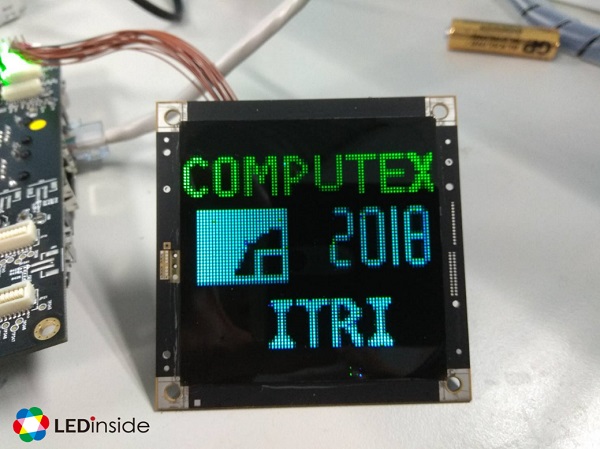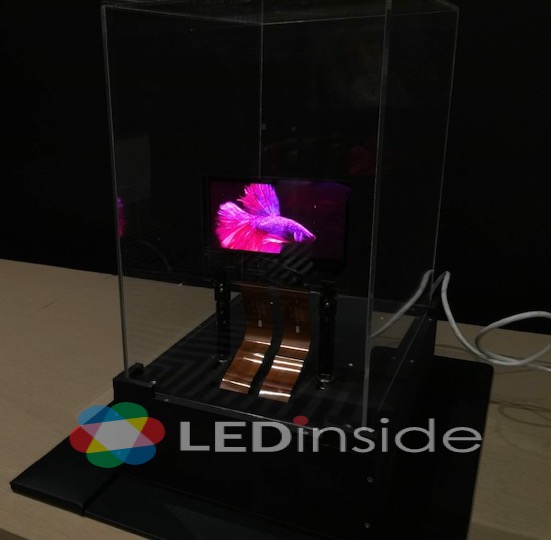Beginning with Samsung’s demonstration of its Micro LED modular TV “The Wall” at CES 2018, this year there has been news and updates about Micro LED from manufacturers and researchers all over the world. LEDinside has been following the latest movements of the industry and has revealed information of Micro LED development in the past few months. Entering the third quarter of 2018, there are more on-going developments and technical progress that we would like to share.
Related reading:
Progress Updates from 10 Companies in the Global Micro LED Manufacturing Force
Must Read: Worldwide Micro LED R&D Progress
Mass Transfer Technology Development
Mass transfer technology is one big stone on the way to Micro LED commercialization. How to successfully transfer numerous miniaturized LEDs in one step is the major challenge for many manufacturers.
ITRI together with Macroblock, Unimicron and PlayNitride developed a Micro LED signage module which directly transfers Micro LED chip on PCB substrate. The achievement was demonstrated at COMPUTEX TAIPEI 2018. ITRI designed the Micro LED chips, and then PlayNitride produced them. Meanwhile Macroblck made the passive matrix driver to drive and correct Micron-size LED chips and Unimicron produced the requested PCB substrate.

(Micro LED signage module on PCB)
The size of the displayed signage module is 6 cm x 6 cm with the definition of 80 x 80 pixels. Its LED chip die is between 50 µm - 80 µm and the pitch is below 800 µm. The module can be applied on products like video wall and indoor signage through splicing and suggests that there is a great potential for cost reduction.
Another technology update for transfer is from KAIST. A team from the Korean institute published its development of a one-step method to transfer thousands of thin-film blue vertical micro LEDs (thickness < 2 μm) on a transparent plastic substrate. The KAIST team plans to apply the technology on wearable devices and expects to show a full-color Micro LED display in smart watch sizes by the end of 2018.
Micro LED Display Released at Display Week 2018
After Samsung showcased its Micro LED TV, it did not take long for other LED manufacturers to release their accomplishments of Micro LED display at Display Week 2018.
glō and Jasper Display Corp. (JDC) demonstrated Micro LED Display with high brightness. With glō’s with its Micro LEDs (10 μm) and JDC’s new silicon backplane, the JD67E2, the Micro LED display with high brightness and contrast can be applied in watches, phones, heads-up-displays (HUDs), and augmented reality (AR) products. The full-color capable JD67E2 die features a resolution of 1920 x 1080, a pixel pitch of 8 um, and offers excellent current uniformity via a proprietary current source pixel.
X-Celeprint showcased a 5.1 inch Micro LED display. The display was produced with the mass transfer technology which X-Celeprint adopted through Van der Waals Force. Christopher Bower, the CTO of X-Celeprint, revealed that this 5.1-inch-full-color display uses 8 x 15 micron Red, Green and Blue Micro LEDs at 70 ppi resolution. The display combines active matrix driver integrated with Micro IC instead of TFT backplane and can thus smoothly display animation.

(Micro LED display from X-Celeprint)
AUO, at the same time, exhibited its 8-inch full-color active Micro LED display with high resolution. The Micro LED display comes with a LTPS-TFT backplane driver that allows each pixel to be lighted independently to realize more refined images with high dynamic range. AUO utilized Micro LEDs smaller than 30µm to achieve 169 ppi pixel densities and to integrate color conversion technology with blue chips for excellent color performance.
ITRI displayed a 960x540 single-color array module and a 640x360 full-color Micro LED array module. With the Si-based CMOS backplane, it is an active-matrix with fixed-point drive which can reach 20K nits brightness.
Also at the exhibition, Play Nitride showed two transparent Micro LED displays. One is 2.65-inches and the other is a 3.12-inch full-color Micro LED display with resolution of 256x256.
Hong Kong JBD used wafer bonding to transfer Micro LED to make a single-color module. The Micro LED module is an active-matrix drive with fixed point on Si-based CMOS backplane with resolution of 648x480. JBD also showed its AR projection mainframe which consists of three RGB single-color matrix modules and is fitted with a three-panel LCD structure.
Production Progress
There have been Micro LED display models released and some breakthroughs in technologies. However, LED producers in the industry still need some time to integrate the latest technology and their capacity for commercialization and mass production. Chip makers including Nichia and Epistar reported that it will take at least 4 years for the technologies to be mature for Micro LED mass production.
Chinese chip producers such as San’an, HC SemiTek and Changelight planned to increase their capacity to initiate Micro LED production as well as prepared research institutes in China to boost Micro LED progress. Meanwhile, Samsung also established partnerships with San’an and Play Nitride to get ready for Micro LED production.
Micro LED development is still confronted with various technology barriers. But the technology progress keeps moving forward as the leading producers and institutes of the industry have been putting efforts in research and development.
LEDinside will disclose more technology progress of Micro LED at Micro LEDforum 2018. On July 12th 2018, experts of the industry will gather at Micro LEDforum to analyze the technology breakthroughs and the market trend.
Last seats available on: http://seminar.trendforce.com/Ledforum/2018/US/index/






 CN
TW
EN
CN
TW
EN








